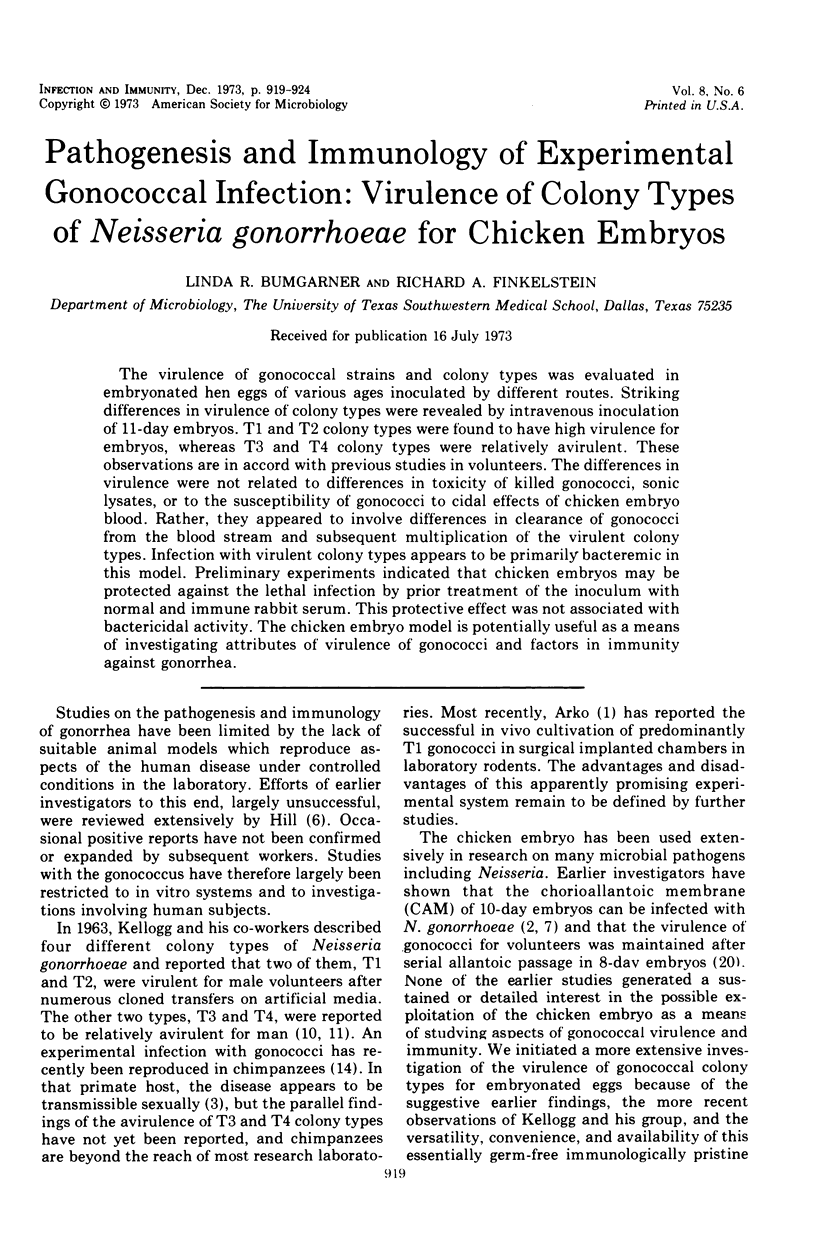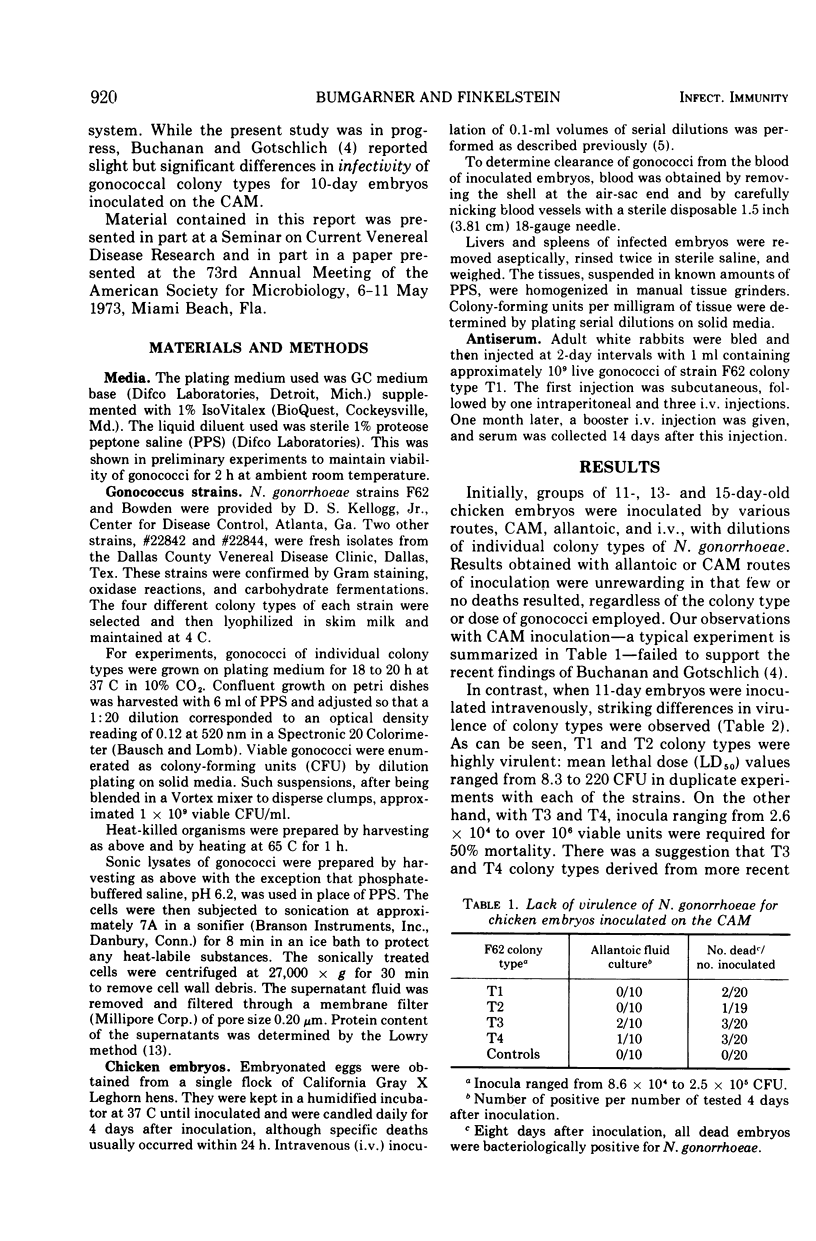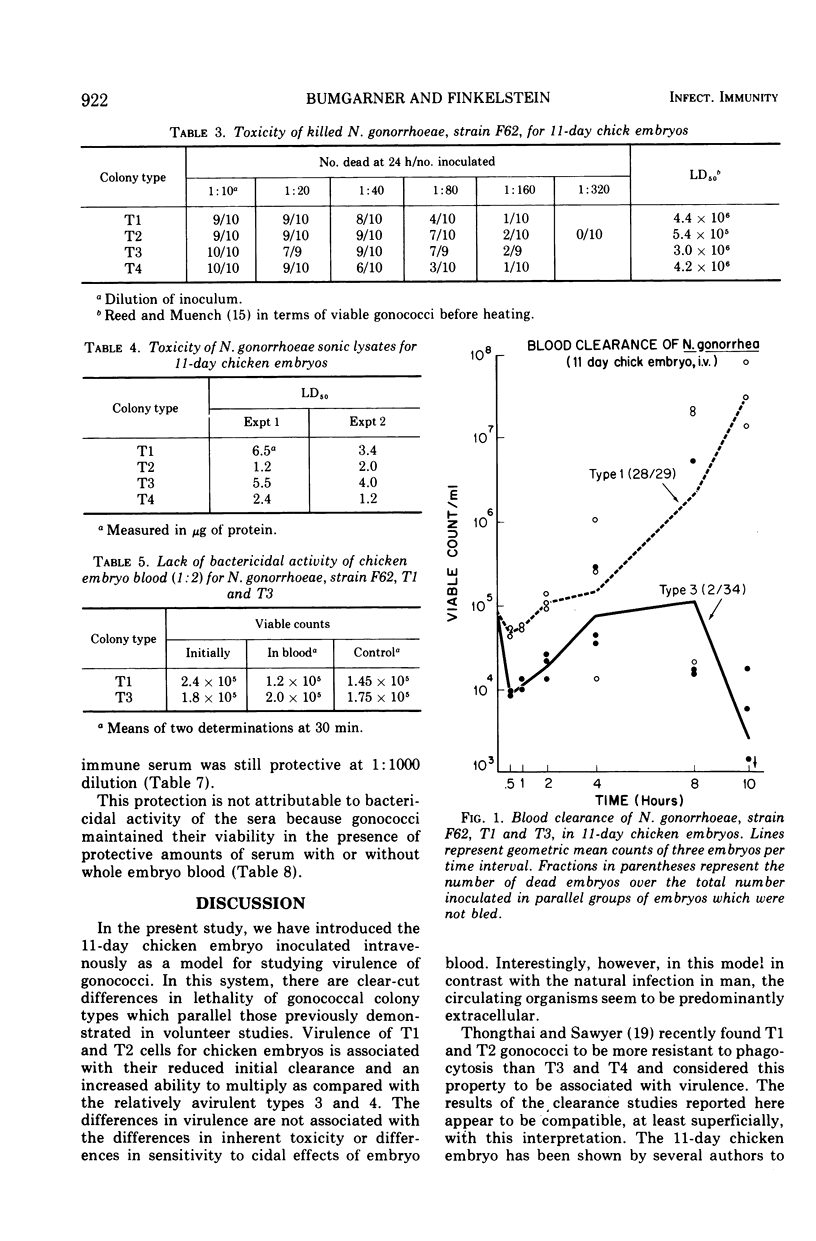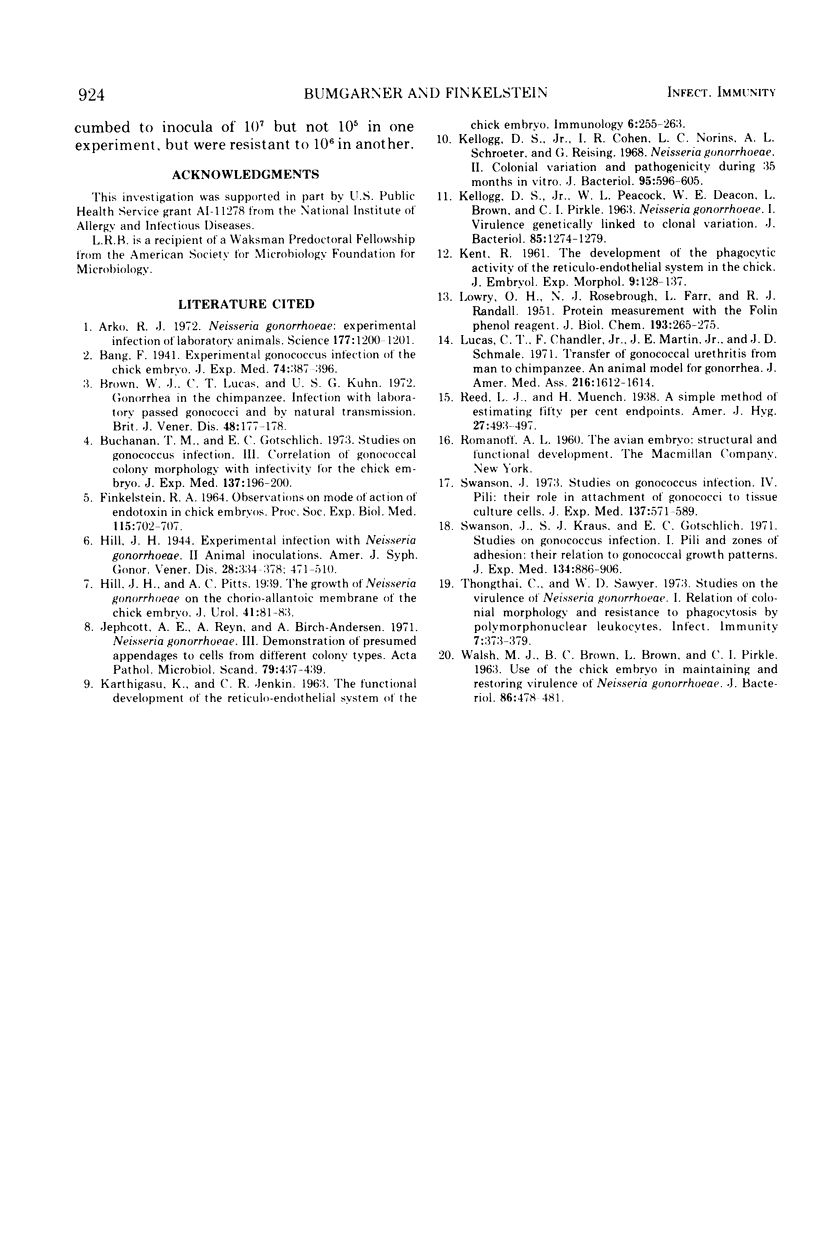Abstract
The virulence of gonococcal strains and colony types was evaluated in embryonated hen eggs of various ages inoculated by different routes. Striking differences in virulence of colony types were revealed by intravenous inoculation of 11-day embryos. T1 and T2 colony types were found to have high virulence for embryos, whereas T3 and T4 colony types were relatively avirulent. These observations are in accord with previous studies in volunteers. The differences in virulence were not related to differences in toxicity of killed gonococci, sonic lysates, or to the susceptibility of gonococci to cidal effects of chicken embryo blood. Rather, they appeared to involve differences in clearance of gonococci from the blood stream and subsequent multiplication of the virulent colony types. Infection with virulent colony types appears to be primarily bacteremic in this model. Preliminary experiments indicated that chicken embryos may be protected against the lethal infection by prior treatment of the inoculum with normal and immune rabbit serum. This protective effect was not associated with bactericidal activity. The chicken embryo model is potentially useful as a means of investigating attributes of virulence of gonococci and factors in immunity against gonorrhea.
Full text
PDF





Images in this article
Selected References
These references are in PubMed. This may not be the complete list of references from this article.
- Arko R. J. Neisseria gonorrhoeae: experimental infection of laboratory animals. Science. 1972 Sep 29;177(4055):1200–1201. doi: 10.1126/science.177.4055.1200. [DOI] [PubMed] [Google Scholar]
- Brown W. J., Lucas C. T., Kuhn U. S. Gonorrhoea in the chimpanzee. Infection with laboratory-passed gonococci and by natural transmission. Br J Vener Dis. 1972 Jun;48(3):177–178. doi: 10.1136/sti.48.3.177. [DOI] [PMC free article] [PubMed] [Google Scholar]
- FINKELSTEIN R. A. OBSERVATIONS ON MODE OF ACTION OF ENDOTOXIN IN CHICK EMBRYOS. Proc Soc Exp Biol Med. 1964 Mar;115:702–707. doi: 10.3181/00379727-115-29012. [DOI] [PubMed] [Google Scholar]
- KENT R. The development of the phagocytic activity of the reticulo-endothelial system in the chick. J Embryol Exp Morphol. 1961 Mar;9:128–137. [PubMed] [Google Scholar]
- Kellogg D. S., Jr, Cohen I. R., Norins L. C., Schroeter A. L., Reising G. Neisseria gonorrhoeae. II. Colonial variation and pathogenicity during 35 months in vitro. J Bacteriol. 1968 Sep;96(3):596–605. doi: 10.1128/jb.96.3.596-605.1968. [DOI] [PMC free article] [PubMed] [Google Scholar]
- LOWRY O. H., ROSEBROUGH N. J., FARR A. L., RANDALL R. J. Protein measurement with the Folin phenol reagent. J Biol Chem. 1951 Nov;193(1):265–275. [PubMed] [Google Scholar]
- Lucas C. T., Chandler F., Jr, Martin J. E., Jr, Schmale J. D. Transfer of gonococcal urethritis from man to chimpanzee. An animal model for gonorrhea. JAMA. 1971 Jun 7;216(10):1612–1614. [PubMed] [Google Scholar]
- Swanson J., Kraus S. J., Gotschlich E. C. Studies on gonococcus infection. I. Pili and zones of adhesion: their relation to gonococcal growth patterns. J Exp Med. 1971 Oct 1;134(4):886–906. doi: 10.1084/jem.134.4.886. [DOI] [PMC free article] [PubMed] [Google Scholar]
- Swanson J. Studies on gonococcus infection. IV. Pili: their role in attachment of gonococci to tissue culture cells. J Exp Med. 1973 Mar 1;137(3):571–589. doi: 10.1084/jem.137.3.571. [DOI] [PMC free article] [PubMed] [Google Scholar]
- Thongthai C., Sawyer W. D. Studies on the virulence of Neisseria gonorrhoeae. I. Relation of colonial morphology and resistance to phagocytosis by polymorphonuclear leukocytes. Infect Immun. 1973 Mar;7(3):373–379. doi: 10.1128/iai.7.3.373-379.1973. [DOI] [PMC free article] [PubMed] [Google Scholar]
- WALSH M. J., BROWN B. C., BROWN L., PIRKLE C. I. USE OF THE CHICK EMBRYO IN MAINTAINING AND RESTORING VIRULENCE OF NEISSERIA GONORRHOEAE. J Bacteriol. 1963 Sep;86:478–481. doi: 10.1128/jb.86.3.478-481.1963. [DOI] [PMC free article] [PubMed] [Google Scholar]



